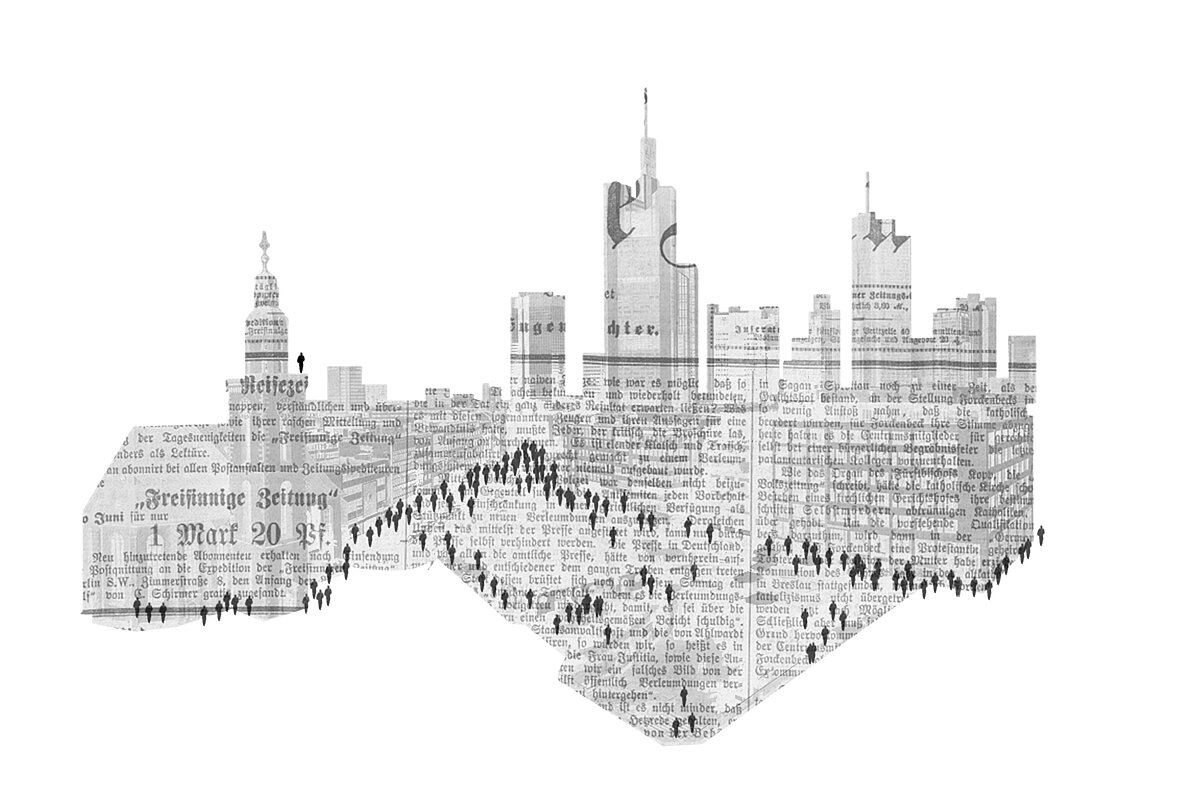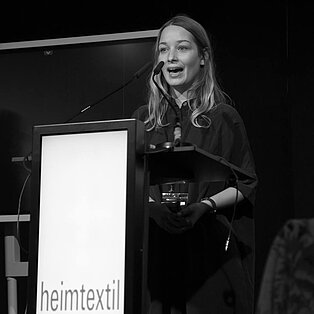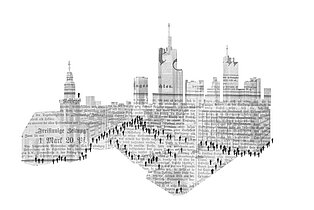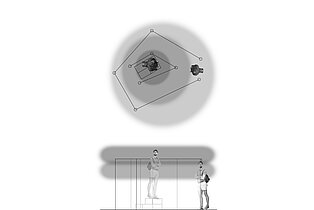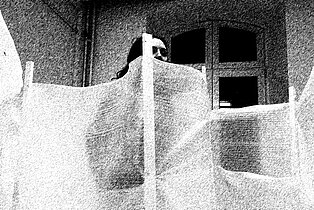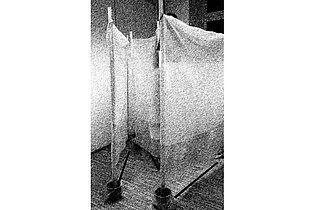Interior Scholarship | Blog 02/2019 | Juliane Glaser
Voyeur or pedestrian?
In the ‘Art of Action’ [Kunst des Handelns], Michel Certeau presents a city planned by one individual or by a minority as a clear, easy-to-read text. However, the notion of a ‘planned city’ derived from the draft design of an architect or a city planner is a purely fictional one. The lived-in and evolving city intrudes into that notion with its opaquely indiscernible and blind kinetic drive.
I worked on this text for a very long time, because I had to read it three times before I even began to understand it. However, the subject, one about which I had never given any thought prior to this, would not let me go. One question after another presented itself to me. My mind’s eye filled with views from look-out towers, of summit crosses, of confused people with city maps in their hands and of old oil paintings composed from the ‘Position of God’. It was an entirely new challenge for me to engage in such an intense dialectic with a text, all the while with the thought of interpreting it in spatial terms. Nonetheless, it was a truly exciting experience! I envisage a large proportion of the typical working day of a scenographer to be something like this. Mind you, during these deliberations, I also ask myself whether abstract philosophical explanations of this nature are really necessary to reveal the true nature of what is surely our very simple human existence and our endeavours. Then I ask myself yet more questions.
In our everyday life, do we deliberately adopt the role of the voyeur? What happens to the voyeur who turns back into a pedestrian? Is an architectural planner a voyeur and a pedestrian at one and the same time? Why engage in planning at all, given that you will lose control of that process sooner or later? As a voyeur, should one adopt several viewpoints, and/or surmount different heights? If the answer is yes, does this then make one mightier than someone who only has one frame of reference? What are you if you have a city map in one hand?
To find answers to these questions, I attempted to isolate certain terms, and then to imbue them with a spatial identity by building them into a simple sketch-like sculpture. This is something that impacts upon us every day, throughout our lives. Structures of society, planning, intertwining growth, restructuring the complete absence of structure. Knowing and not knowing.
The city
“The gigantic mass… transforms itself into an interwoven text… ”
The city as a text. While Rome may read as a story of the art of growing old, the narrative of New York is one of excess founded upon wastage and production. The existing is discarded, and the future is a simple accretion on existing structures.
The pedestrian
“ …whose bodies follow the more or less clearly discernible story-book imagery of an ‘urban text’, one that they write without being able to read what they have written. ”
The cohesive mass formed by the pedestrians in a city follows the more or less clearly legible story-book imagery of that urban text. Surrounded by streets and buildings, the identities of those pedestrians coalesces and blurs, with each becoming part of the mass entity.
The voyeur
“ …being raised up means to be torn away from the might of access to the city. "
Through his elevated position the voyeur regains his identity. He does this by being absent from the impenetrable tangle of structures that constitutes everyday life, thereby establishing the necessary distance. The voyeur leaves the mass behind, and the text becomes legible to him.
The eroticism of knowledge
“…to have an ‘overview’ of this most infinitely extensive of all texts’, o perch high above it and to grasp it in its entirety”.
Man has the driving urge, the desire, to grasp the meaning of the text, the city, to understand them and to acquire knowledge. Fascinated by adopting the role of the ‘all-seeing eye’, you look down upon the subordinated mass from a god-like position.
The fiction of knowledge
“Only being this viewpoint is what constitutes the fiction of knowledge”.
The knowledge acquired by ‘reading’ the city is only fiction. A deceptive image that arises from the restricted view of an individual and his subjective perception. After climbing back down, the voyeur once again becomes part of the mass.
Since the exhibition space available to us for setting things up here in the university is not a city, and since I genuinely found a single evening to be too short to recount an entire life, I divided the sculpture into three ‘Zones’. The person passing through is isolated from the social event of Zone 1 and is then raised to the elevated plane of a voyeur. As a pedestrian he enters into the sculpture which, in Zone 2, immediately calls for a decision to be made. Should I go to the right or to the left? Where does the path lead? You slowly disappear from the field of view of other people. Through the transparent, trembling walls, it is only possible to gain imprecise impressions of the surrounding world. In Zone 3, it is no longer possible to look out at the outside world, and you sense the urge to look beyond the walls and back at the distance already covered. You climb the steps and assume the position of the voyeur. At one and the same time, you experience the pleasure of knowledge and the power as well as the realisation that you will soon once again be a part of life, literally proceeding down at your feet.
In the course of the evening on which we were to be seeking to bring our dialectic closer to the texts of the visitors, many interesting discussions took place. It took a while before visitors felt confident enough to walk into the sculpture. During this exhibition, I established that a few pedestrians who had transformed into voyeurs were also using their vantage point to observe the mass of ‘pedestrians’. These people sensed their gaze upon them and accorded the voyeur their attention. This in turn caused the voyeur to lose confidence and to lose power. Whenever you climb up inside a church steeple, no-one questions this action. However, if you climb up onto a chair in the middle of a room, you attract irritated glances and feel awkward and conspicuous. It was similar in the case of this sculpture. Unfortunately, the distance was not great enough to be able to feel superior, but it was sufficient to gain a slight inkling of this feeling.
About Juliane Glaser
Photo: Juliane Glaser is one of the four winners of the Interior Scholarship grant issued by AIT and the Sto Foundation. She provides the following tip for other students: "Scholarships allow you a bit more freedom to help combat the significant pressure during your studies. You will therefore have more time for your own projects, as well as activities outside and within the university".
After completing a bachelor's degree in interior design, Juliane Glaser is now doing a master's degree course (Communication in Space) at the Mainz University of Applied Sciences. In 2017, she completed a 6-month internship at an architecture office in Mannheim. After her studies, her aim is to become a self-employed interior designer. The Interior Scholarship grant will allow her, amongst other things, to undertake a foreign internship in Switzerland and provide her with more time for her own projects.


